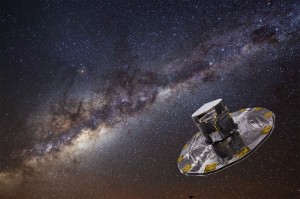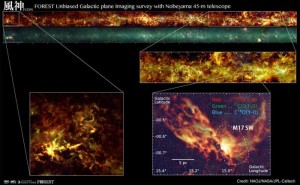The Carnival of space is a long-running collaboration of bloggers in the space exploration field helping each other showcase the wonderful events happening as we push ourselves and our technology to ever more thrilling adventures off-world! You can join us, just click the link to learn more. Read this week’s offerings here…
Studying Surface Features on Earth as Analogs to Surface Features on Mars Using Astronaut Photography
Amy Jagge | Cosmo Quest
Earth and Mars are commonly known for their differences. Earth is characterized by its habitable conditions and layered atmosphere while Mars is considered a dry, hostile planet with an almost non-existent, thin atmosphere. However, scientists investigating Mars (and other solar system bodies like the Moon) recognize the importance of researching their similarities as well as their differences to Earth.
CQ Science – Post 11: A Final Crater Mapping Mystery
Jagrier | Cosmo Quest
As promised, here is our second mystery concerning craters and incidence angle. This is an image of a region of the Moon south of Copernicus crater. Take a good look. Something isn’t quite right …
Can you see what is off? If yes, you’ve probably spent a lot of time looking at images here at CQ! If you don’t see something strange, look below for a hint – some of the impact craters now have boxes around them.
We Can Use Your Help – Tell Us What You Do With CosmoQuest!
Susie Murph | Cosmo Quest
We are once again asking for your input through a series of three surveys, each of which is targeting a specific aspect of CosmoQuest and what we do: [see page for the surveys]
New ASP Book to Document the 2017 Eclipse: Celebrating the Great American Eclipse of 2017
Susie Murph | Cosmo Quest
If you had an interesting experience last year observing the Eclipse, with us or elsewhere, and are interested in writing about it, we have an opportunity from the ASP!
The Astronomical Society of the Pacific is pleased to announce a new book to document and celebrate the efforts of professional astronomers, outreach professionals, citizen scientists, teachers, amateur astronomers, institutions, schools, and others who participated in the 2017 solar eclipse.
We welcome articles on the following topics (but not limited to) for inclusion:
The Brightest Star in the Sky, Sirius, was Hiding a Cluster of Stars. Found by Gaia
Matt Williams | Universe Today
In December of 2013, the European Space Agency’s Gaia mission took to space. Since that time, this space observatory has been studying a billion astronomical objects – including stars, planets, comets, asteroids and galaxies – for the sake of creating the most precise 3D space catalog ever made. By the time the mission wraps up (later this year, barring extensions), it is expected to reveal some truly amazing things about our Universe.
In fact, with the first release of its data, the Gaia probe revealed something that has gone completely unnoticed until now. While viewing Sirius, the brightest star in the night sky, Gaia revealed a…
The Most Detailed Map Ever Made of the Milky Way in Radio Waves
Evan Gough | Universe Today
A Japanese telescope has produced our most detailed radio wave image yet of the Milky Way galaxy. Over a 3-year time period, the Nobeyama 45 meter telescope observed the Milky Way for 1100 hours to produce the map. The image is part of a project called FUGIN (FOREST Unbiased Galactic plane Imaging survey with the Nobeyama 45-m telescope.) The multi-institutional research group behind FUGIN explained the project in the Publications of the Astronomical Society of Japan and at arXiv.
The Nobeyama 45 meter telescope is located at the Nobeyama Radio Observatory, near Minamimaki, Japan. The telescope has been in operation there since 1982, and has made many contributions to millimeter-wave radio astronomy in its life. This map was made using the new…
NASA’s Insight Lander Spreads Its Solar Wings. It’ll Fly To Mars In May, 2018
Evan Gough | Universe Today
May 2018 is the launch window for NASA’s next mission to Mars, the InSight Lander. InSight is the next member of what could be called a fleet of human vehicles destined for Mars. But rather than working on the question of Martian habitability or suitability for life, InSight will try to understand the deeper structure of Mars.
InSight stands for Interior Exploration using Seismic Investigations, Geodesy and Heat Transport. InSight will be the first robotic explorer to visit Mars and study the red planet’s deep interior. The work InSight does should answer questions about the formation of Mars, and those answers may apply to the history of the other rocky planets in the Solar System. The lander, (InSight is not a rover) will also measure meteorite impacts and tectonic activity happening on Mars currently.
To keep following this path, seek out the Carnival of Space #548 over at Next Big Future, run by Brian Wang. Until Next Time!








































Pingback: Space-for-All at HobbySpace » Carnivals of Space #546-547 – Urban Astronomer and Everyday Spacer
Pingback: Carnival of Space #547 | Citizen Science
Pingback: Carnival of Space #547 - Universe Today
Pingback: Carnival of Space #547 – Renfrewshire Astronomical Society
Pingback: Carnival of Space #547 | WRAC
Pingback: Carnival of Space #547 – The Science Page